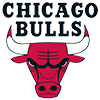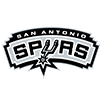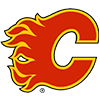They're back! One of my favorite responsibilities at RotoWire is generating the weekly pitching and hitting rankings. While not much has changed, it's helpful to explain my process to new subscribers and refreshed returnees.
Most importantly, it's an objective system. Of course, I can override the output with some subjective seasoning, but the rankings are mostly formulaic.
Secondly, they're one opinion which you need to apply in context. That's a large part of detailing the process, so you have an idea from where the rankings emanate. With that foundation, you can best consider them within your league's format, and apply them to your team's needs.
PITCHING RANKINGS
The pitching rankings begin with a baseline projection for each scheduled hurler. This is derived from my rest-of-season projection. The rest-of-season projections are a weighted average of my expectations and their in-season performances. It is not linear. That is, the coefficients for all the skills are not the same. Some skills become more reliable sooner, so their in-season incorporation is heavier than others.
If it is apparent my initial expectation was too aggressive or pessimistic, I'll change it to accelerate capturing any new skills. Especially early, I hesitate to adjust too much since sometimes the perceived change turns out to be incorrect. If it is indeed real, the algorithm will reflect it soon enough.
The necessary elements of the projection are then adjusted to account for the opposition. If an offense has an above-average home run rate, the pitcher's home run projection is
They're back! One of my favorite responsibilities at RotoWire is generating the weekly pitching and hitting rankings. While not much has changed, it's helpful to explain my process to new subscribers and refreshed returnees.
Most importantly, it's an objective system. Of course, I can override the output with some subjective seasoning, but the rankings are mostly formulaic.
Secondly, they're one opinion which you need to apply in context. That's a large part of detailing the process, so you have an idea from where the rankings emanate. With that foundation, you can best consider them within your league's format, and apply them to your team's needs.
PITCHING RANKINGS
The pitching rankings begin with a baseline projection for each scheduled hurler. This is derived from my rest-of-season projection. The rest-of-season projections are a weighted average of my expectations and their in-season performances. It is not linear. That is, the coefficients for all the skills are not the same. Some skills become more reliable sooner, so their in-season incorporation is heavier than others.
If it is apparent my initial expectation was too aggressive or pessimistic, I'll change it to accelerate capturing any new skills. Especially early, I hesitate to adjust too much since sometimes the perceived change turns out to be incorrect. If it is indeed real, the algorithm will reflect it soon enough.
The necessary elements of the projection are then adjusted to account for the opposition. If an offense has an above-average home run rate, the pitcher's home run projection is adjusted accordingly. This is done for not only homers, but also strikeouts, hits, and walks. Early on, the quality of the offense comes from projections, but as the season unfolds, it reflects the team's performance. The venue, and whether the game is home or away, is also factored into the daily projection.
Once the hits, homers, walks and strikeouts are projected, the expected ERA follows. Everything is distilled to a per-inning basis. One of the few subjective inputs is an innings pitched projection. This is based mostly off the recent history of the starters but is tempered by the opponent. If a guy averages 5.1 innings per start, I'll project 5.2 or a full six against weak opponents, especially at home. If it's a tough matchup, perhaps he'll be projected for only five frames.
STRIKEOUTS
Strikeouts are straightforward. Each hurler garners a daily projection based on his per-inning expectations and the projected innings.
ERA and WHIP
A baseline ERA and WHIP is computed from my season-long projections. How the pitcher's week affects that baseline is computed. If he has two starts scheduled, all the pertinent inputs are summed. If the pitcher is expected to perform better than league average, the baseline ERA and WHIP are lowered, and vice versa.
WINS
This is a little tricky. A modified version of the Bill James Pythagorean Theorem is utilized. The pitcher's ERA is applied over the projected innings, then his team's bullpen is included. Since this is done for all the teams, the runs scored and runs allowed by the pitcher's team are available, so the resulting win probability can be determined. This is the probability for the team. The pitcher's odds of collecting the win is determined from the team's odds, adjusted to his innings projection. Someone projected for 6.1 frames has a better chance than a 5.1-inning projection. The win probability is considered a counting stat. If he has two starts, it's computed individually, then summed.
RANKING
Every pitcher now has a wins, strikeout, ERA and WHIP projection. These are scored rotisserie style, with the top pitchers garnering the most points. Doing it in this manner allows a means to compare single-start individuals to those with two starts. Double dippers rank higher in the wins and strikeouts categories. A two-start pitcher with better ERA and WHIP than a one-start guy will lower ratios more, and hence rank high in the rotisserie-like scoring. By contrast, a two-start guy with worse ratios than a one-start pitcher will damage those categories more.
Understanding the above helps you apply the ranking in context. If you want to protect ratios, a two-start pitcher that may be ranked high due to his wins potential and strikeouts may not be the one you want. A lower-ranked pitcher may be better for your team's needs.
EARLY SEASON VARIANCE
The error bars associated with an endeavor of this nature are already significant. However, they are even more prominent early, since the inputs are driven by projections. As an example, who would have pegged the Guardians for scoring so many runs in the first week? As the season progresses, things tighten up and the error bars should shrink. That said, the onus is on you to use the rankings as a guide, seasoning your own judgement. To that end, please don't hesitate to ask about your matchup decision in the discussion section in the weekly columns.
TEAM HITTING RANKINGS
The Team Hitting Rankings identify clubs to identify for different statistical contributions. They're presented by handedness and are based on the site's probable pitching grid. Here is an explanation of each component.
Games
Um, it's the number of games each team plays. However, it is broken down by LHP/RHP as well as home/away, so there's that. The columns are sortable to help you find players with the best setup.
HR LHB/HR RHB
This is a weighted average of the home run indices for all parks the team plays in that week. If a team is at home all week, it's obviously their factor. If they play three at home and four on the road, it's three times the home park's HR factor, plus four times the road venue's, divided by seven.
SB
The stolen base score is presented as an index, with 100 being neutral. The opposing team's starting pitching, bullpen, and catchers' abilities to control the running game are factored in. The higher the index, the better the team's chances to rack up a few pilfers over the course of the week.
P LHB/P RHB
This is another index. It reflects the quality of opposing pitching, using wOBA as the determinant. The opposing starters and bullpen comprise the index. The higher the number, the weaker the opposing pitching. It's not unusual for there to be markedly different indices if the scheduled starters are mostly lefties or righties.
Runs
This is another index. It's generated from the pitching projections. The projected score of each game is used to determine the win probability. The total runs each team is projected to score each week can be summed and converted into an index. The higher the index, the more runs the team is projected to tally.
AVE LHB/AVE RHB
Long-time subscriber may recall the tables did not include any sort of overall team score when they were first rolled out. My reasoning was if I wanted power, I'd sort by HR LHB/HR RHB. If I wanted steals, I'd look at the SB column. If I was looking for runs or RBI, the Runs column was the focus. Personally, I didn't care about a team score.
Well, others did. Ask (nicely), and you shall receive. As such, we worked together to come up with a weighted average for the categories to best reflect the overall ranking for each team, broken down by handedness.
Total
This considers the number of lefty and righty swingers on each team to compute a weighted average of the AVE LHB and AVE RHB.
There you have it, a Weekly Pitching Rankings and Weekly Hitting Rankings primer. For those new, I do my best to file by noon Eastern on Saturdays. Depending on the other duties of the editors, they usually are up within a couple of hours. They will then be updated Sunday night, once the news settles and it appears there will be no more changes to teams' initial plans.
























